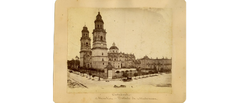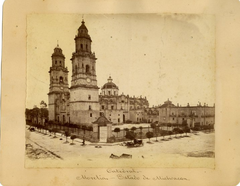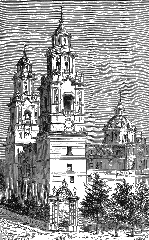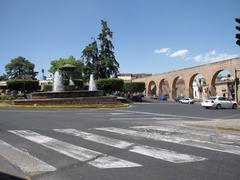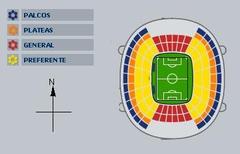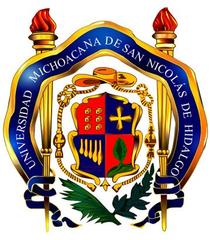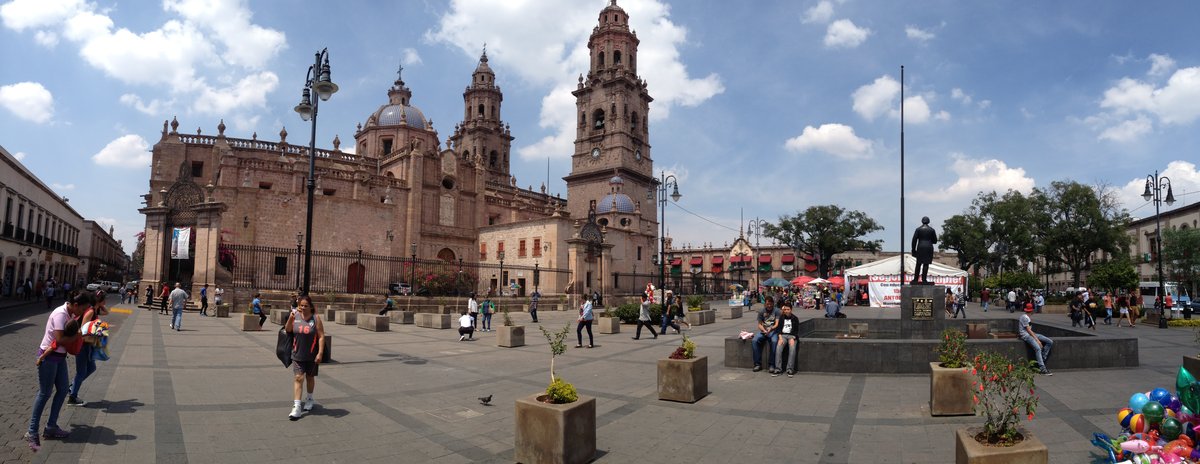
Visiting Hours, Tickets, and Travel Tips for Catedral de Morelia
Date: 17/07/2024
Introduction
The Catedral de Morelia, officially known as the Cathedral of the Transfiguration of Our Lord, is a majestic architectural and cultural landmark situated in Morelia, Mexico. Constructed over an 84-year period beginning in 1660, the cathedral stands as an exemplary fusion of Baroque and Neoclassical architectural styles, designed by the renowned Italian architect Vicenzo Barrochio (INAH). The use of pink cantera stone, a signature element of Morelia’s colonial architecture, further accentuates its grandeur and historical significance. As one of the tallest structures in the region during its time, the cathedral’s twin towers symbolize the far-reaching influence of the Catholic Church during the Spanish colonial era (UNESCO). Over the centuries, the Catedral de Morelia has not only served as a place of worship but has also been a witness to numerous historical events, from the Mexican War of Independence to the Cristero War, thereby cementing its role as a cornerstone of Morelia’s historical and cultural identity (Mexican History).
Table of Contents
- Introduction
- History of Catedral de Morelia
- Visiting Hours and Tickets
- Preservation Efforts
- Modern-Day Relevance
- Frequently Asked Questions
- Conclusion
Discover the Rich History of Catedral de Morelia
History of Catedral de Morelia
Origins and Construction
The construction of the Catedral de Morelia began in 1660 and was completed in 1744, taking nearly 84 years to build. This extensive construction period reflects the architectural ambition and intricate craftsmanship involved in its creation. The cathedral was designed by Italian architect Vicenzo Barrochio, who infused the structure with elements of Baroque and Neoclassical styles, making it a unique architectural marvel in the region (INAH).
Colonial Influence
The cathedral’s construction coincided with the Spanish colonial period, a time when the Catholic Church played a pivotal role in the cultural and social life of New Spain. The use of pink cantera stone, a hallmark of Morelia’s colonial architecture, adds to the cathedral’s grandeur and historical significance. The twin towers, which rise to a height of 66.8 meters, were among the tallest structures in the region at the time, symbolizing the reach and influence of the Catholic Church (UNESCO).
Architectural Evolution
Over the centuries, the Catedral de Morelia has undergone several modifications and restorations, each adding layers to its historical narrative. The original Baroque elements were complemented by Neoclassical features in the 19th century, reflecting the evolving architectural trends and the city’s growing affluence. The interior of the cathedral is adorned with intricate altarpieces, frescoes, and sculptures, many of which were added during the 18th and 19th centuries. These artistic additions enhance the aesthetic appeal of the cathedral and serve as historical records of the artistic and cultural influences that have shaped Morelia over the centuries (Morelia Tourism).
Historical Events
The Catedral de Morelia has been a witness to numerous historical events that have shaped the city and the nation. During the Mexican War of Independence (1810-1821), the cathedral served as a refuge and a strategic point for both insurgents and royalist forces. The cathedral’s bells, particularly the “Campana Gorda,” were used to signal important events and mobilize the populace. In the 20th century, the cathedral played a significant role during the Cristero War (1926-1929), a conflict between the Mexican government and Catholic rebels. The cathedral’s resilience through these turbulent times underscores its importance as a historical and cultural landmark (Mexican History).
Cultural Significance
The Catedral de Morelia is not just an architectural masterpiece; it is also a cultural icon that embodies the spiritual and communal life of Morelia. The cathedral is the focal point of many religious and cultural festivals, including the Feast of the Transfiguration and the Day of the Dead celebrations. These events attract thousands of visitors and pilgrims, highlighting the cathedral’s enduring significance in the cultural and religious landscape of Morelia. The cathedral’s role in these festivities underscores its importance as a living monument that continues to shape and reflect the cultural identity of the city (Morelia Cultural Events).
Visiting Hours and Tickets
- Opening Hours: The Catedral de Morelia is open daily from 9:00 AM to 6:00 PM.
- Ticket Prices: Admission to the cathedral is free, but donations are welcome.
- Guided Tours: Guided tours are available daily at 10:00 AM and 2:00 PM. Reservations can be made through the official tourism website (Morelia Tourism Board).
Preservation Efforts
Given its historical and cultural significance, the Catedral de Morelia has been the focus of extensive preservation efforts. The cathedral was designated a UNESCO World Heritage Site in 1991, a recognition that underscores its global importance. Preservation efforts have included structural reinforcements, restoration of the original frescoes and altarpieces, and the installation of modern lighting and sound systems to enhance the visitor experience. These efforts ensure that the cathedral remains a vibrant and accessible historical site for future generations (UNESCO World Heritage).
Modern-Day Relevance
Today, the Catedral de Morelia continues to be a central part of the city’s social and cultural fabric. It serves as the seat of the Archdiocese of Morelia and hosts numerous religious ceremonies, including ordinations, weddings, and baptisms. The cathedral also plays a significant role in the city’s tourism industry, attracting visitors from around the world who come to admire its architectural beauty and historical significance. The cathedral’s ongoing relevance is a testament to its enduring legacy and its ability to adapt to the changing times while preserving its historical essence (Morelia Tourism Board).
Frequently Asked Questions
- What are the visiting hours for Catedral de Morelia?
- The cathedral is open daily from 9:00 AM to 6:00 PM.
- Is there an admission fee?
- Admission is free, but donations are encouraged.
- Are guided tours available?
- Yes, guided tours are available daily at 10:00 AM and 2:00 PM. Reservations can be made through the official tourism website.
Conclusion
The history of the Catedral de Morelia is a rich tapestry of architectural innovation, colonial influence, and cultural significance. From its origins in the 17th century to its modern-day role as a cultural and religious landmark, the cathedral stands as a testament to the enduring legacy of Morelia’s historical and cultural heritage. Through ongoing preservation efforts and its continued relevance in the city’s social and cultural life, the Catedral de Morelia remains a vital and vibrant part of Morelia’s identity (UNESCO World Heritage).
References
- INAH. (n.d.). Retrieved from https://www.inah.gob.mx/
- UNESCO. (n.d.). Historic Centre of Morelia. Retrieved from https://whc.unesco.org/en/list/585/
- Morelia Tourism. (n.d.). Retrieved from https://www.visitmexico.com/en/main-destinations/michoacan/morelia
- Mexican History. (n.d.). Retrieved from https://www.mexicanhistory.org/
- Morelia Cultural Events. (n.d.). Retrieved from https://www.moreliacultural.org/
- Mexicodesconocido. (n.d.). Catedral de Morelia. Retrieved from https://www.mexicodesconocido.com.mx/catedral-de-morelia.html

